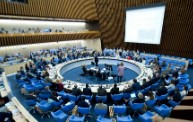Zasavje
Administrative region of Zasavje is not considered as Spodnja Štajerska anymore (even less than Posavska), but it would be the right thing to mention it here. Especially because geographic area from west of Ljubljana Basin to the hills around the Sotla River is called Posavsko hribovje, recently also Vzhodno Predalpsko hribovje. The area contains almost 10% of the area of Slovenia, and it is more than 25 kilometers wide and 70 kilometers long.…
 Business tourism is a major part of tourism in the world.
Business tourism is a major part of tourism in the world.